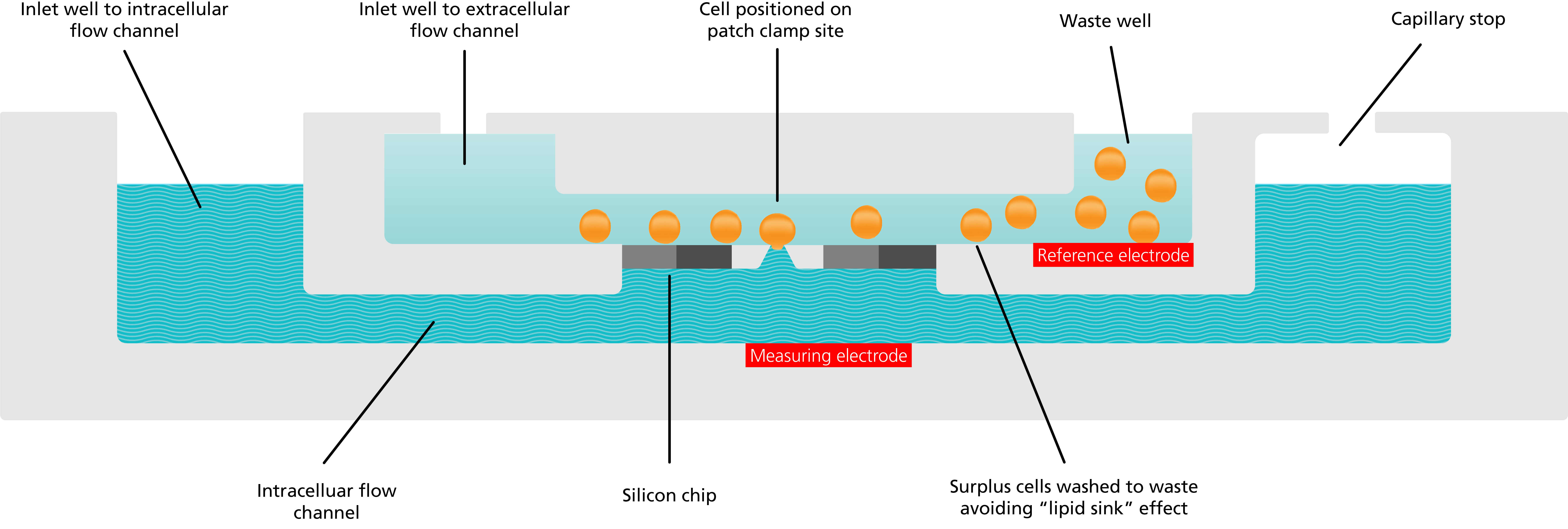Sophion patch clamp chips and patch hole technology
The heart of any automated patch clamp solution is the biochips that hold the planar patch hole, which now replaces conventional glass pipettes in manual patch clamping. Sophion patch clamp chips are based on microfluidic principles to ensure fast and complete liquid exchange, pre-defined compound concentration and low compound consumption.
Microfluidics ensure fast and complete liquid exchange
A unique feature of Sophion’s QPlate and QChip 384 is the advanced microfluidic flow channels that lead compounds and buffers to the cell.
Each measurement site has an individual extracellular flow channel that enables fast and reproducible extracellular liquid exchange with a well-defined compound concentration, effectively increasing throughput and reducing the cost per data point. Each column has an individual intracellular flow channel that enables fast and reproducible intracellular liquid exchange with a well-defined compound concentration.

Embedded electrodes – no drift, no maintenance
Embedded single-use silver-chloride electrodes ensure superior voltage control, reduce the risk of cross-contamination, and eliminate the need for maintenance.
Silicon for true gigaseals
In summary, these features make our biochips ideal for experiments with current-clamp recordings and voltage- and ligand-gated ion channels.
In the QPlate, it is a silicon-based patch-hole utilizing an advanced and exclusive technology developed and owned by Sophion. The patch hole enables the routine formation of genuine gigaseals in physiological solutions, ensuring uncompromised data quality.
Polymers for maximal flexibility
In the QChip, the patch hole substrate is polymer based. It is the key to offering high-quality data at a reduced site footprint while ensuring flexibility to customize patch hole numbers and sizes. This flexibility can be used to optimize high throughput screens on any cell and ion channel.